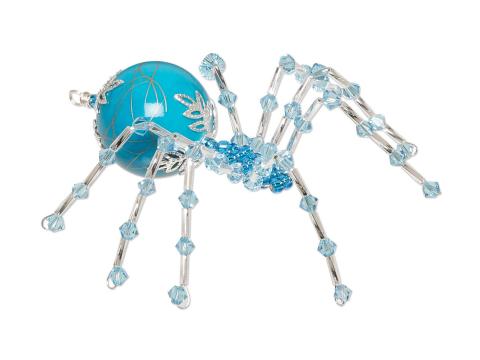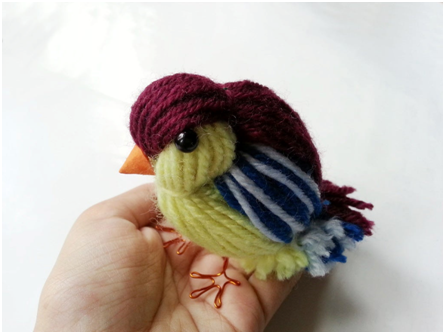How (and Why) to Make a Christmas Spider
by Leslie, Exclusively for Fire Mountain Gems and Beads®
Ready to make a Christmas spider ornament? Yes, Christmas spider! Spiders aren't just for Halloween. The legend of the Christmas spider is an ancient story about the origin of tinsel for Christmas trees. Learn all about the history of Christmas spiders placed in Christmas trees and then make your own beaded spider with full FREE instructions.

Legend of the Christmas Spider
Christmas spiders may not be as iconic as Rudolph and Frosty to western audiences but placing eight-legged ornaments in a Christmas tree is a well-known European tradition. According to the folktale, a mother was busy cleaning her home for Christmas. As she swept and cleaned, spiders fled to the attic to be out of the way. On Christmas Eve night, the spiders came out for a peek and exclaimed, "What a beautiful tree!"
In the spiders' excitement, they scurried along the branches, adding their grey webs to the decorations. When Santa arrived with gifts for the children and saw how happy the spiders were, he was filled with joy. He knew though, the mother would be sad to see her tree shrouded in dull webbing, so he turned the strands to silver, making the tree even more radiant than before.
There are variants of this story, including that the Christ child changed the webbing to tinsel because spiders were God's creatures and loved, too. He did not want the mother to be dismayed by the spiders' enthusiasm. Another take on the story suggests a widowed mother and her children were too poor to decorate their Christmas tree. On Christmas Eve, the spiders spun their webs along the branches. When the family awoke on Christmas and saw the sunlight on the webbing, turning it silver and gold, the family was jubilant at the beautiful sight.
No matter the version told, the result was the placing of tinsel and a spider ornament amongst the branches of Christmas trees.

Spider Symbolism
Still not sold on spiders? While spiders may give some people the creeps, these arachnids have been considered lucky or good omens by dozens of cultures throughout history--and these are only a handful of examples. In ancient China, seeing a spider drop from its web was a sign you would be blessed with good luck. In ancient Rome, spiders were believed to be symbols of prosperity. Many Native Americans respected spiders and believed dreamcatchers came from a benevolent Grandmother Spider. In West African folklore, Anansi was a spider god who was associated with storytelling and wisdom. According to ancient Indian writings, a large female spider wove the universe we inhabit. This spider sits at the center of the web, directing things with her strands. Spiders are mentioned in the Bible as humble creatures, yet they inhabit kings' palaces.
Christmas Spider Components
Now that you know the history of tinsel and the Christmas spider, it's time to actually make a beaded spider. Christmas spiders can be as small or as large as you want. Here are a few suggestions for various parts of the spider based off examples we've seen:

Head:
Body:
Legs:
Additional Embellishments:
Make a Christmas Spider

STEP 1
Cut four 7-inch lengths of 24-gauge wire and one 6-inch length of 20-gauge wire.
STEP 2
At the end of the 6-inch length of wire, create a spiral that is approximately the size of the end of an acrylic nugget.
Note: View ''Forming a Wire Spiral'' illustrated instructions for additional details.
STEP 3
Gather the 7-inch lengths of wire together. Using all the lengths at once, curve the wire in the center around the jaw of round-nose pliers.
Continue to bend the wire ends in opposite directions to create a loop. Holding the loop tightly with the pliers, twist the two groups of wire ends to secure the loop.
STEP 4
String an acrylic nugget, the wire loop created in Step 3 and a 12mm acrylic round onto the straight end of the 6-inch length of wire. Create a wrapped loop on the 6-inch length of wire, tight against the round bead.
STEP 5
Onto a leg string six sets of one bugle bead and one seed bead, then create a simple loop. Repeat to bead the remaining legs.

Design with ...
Additional Resources ...


